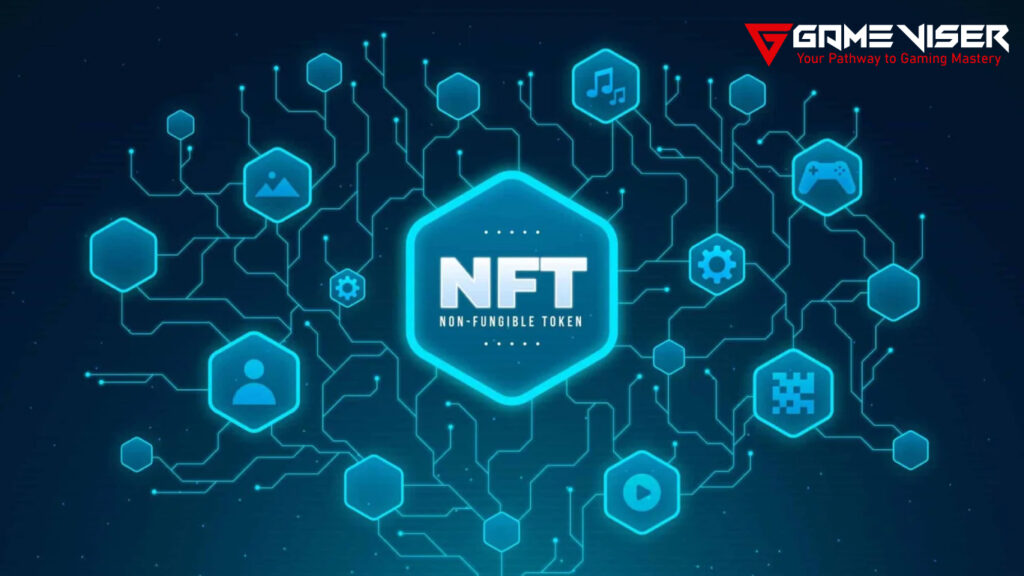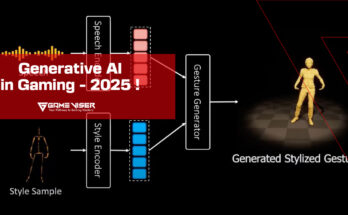Explore the evolution of Play-to-Earn (P2E) games in 2025. Learn about the opportunities, pitfalls, and the future of blockchain-based gaming. SEO-optimized and AdSense-compliant analysis of the current state of P2E gaming.
Table of Contents
Introduction
Play-to-Earn (P2E) games revolutionized the gaming industry by introducing a model where players could earn real-world value through gameplay. The concept gained significant traction between 2020 and 2022 with games like Axie Infinity, The Sandbox, and Decentraland. Fast forward to 2025, and the landscape looks dramatically different. Is P2E still a viable model, or has it become a cautionary tale? This article explores the rise, fall, and potential resurgence of P2E games.
What Are Play-to-Earn (P2E) Games?
Play-to-Earn games integrate blockchain technology to reward players with cryptocurrency or NFTs (non-fungible tokens) that have real-world value. The model promises democratized income through gaming, allowing players to earn by completing tasks, winning battles, or trading digital assets.

Unlike traditional games, where assets are locked within the ecosystem, P2E games allow true ownership and transferability of items, giving players economic agency. This paradigm shift is not only transforming how games are played but also creating new opportunities for employment and entrepreneurship, especially in developing regions where gaming income can surpass local wages. Furthermore, it fosters community-driven economies, where players and developers share mutual benefits through decentralized governance and token-based incentives, ultimately redefining the value of time spent in virtual worlds.
Key Features of P2E Games
- Blockchain Integration: Ensures asset ownership and decentralization.
- Earning Mechanism: Players earn crypto or tokens.
- NFTs: Unique digital assets used for characters, skins, or virtual land.
- Marketplaces: Platforms where in-game assets are bought and sold.
The Meteoric Rise (2020–2022)
During the COVID-19 pandemic, millions of individuals worldwide turned to Play-to-Earn (P2E) games not only as a form of entertainment but also as a viable source of income amid economic uncertainty and widespread job losses. With traditional employment disrupted, P2E platforms offered an accessible alternative, particularly in regions with limited job opportunities or insufficient government support. Early adopters of popular P2E titles, such as Axie Infinity, reported substantial financial returns—sometimes earning more than their previous full-time jobs.
This surge in participation highlighted the potential of decentralized gaming economies to provide financial relief and empowerment during times of crisis. It also accelerated the mainstream adoption of blockchain-based gaming, attracting attention from investors, developers, and policymakers seeking to understand and harness the socioeconomic impact of digital asset ownership in gaming ecosystems.
Notable Early Successes
- Axie Infinity: At its peak in 2021, Axie Infinity had over 2 million daily active users. Players in the Philippines earned more than local minimum wages by breeding and battling Axies.
- The Sandbox and Decentraland: These metaverse platforms sold virtual land for thousands of dollars, attracting investors and brands alike.
Why It Took Off
- Pandemic lockdowns increased gaming activity.
- Cryptocurrency boom boosted interest.
- Media hype and influencer marketing fueled adoption.
- Promised real earnings from playing games.
The Decline (2023–2024)
While the initial boom was promising, cracks began to show in the foundation of the P2E model.
Core Challenges
Unsustainable Economies
Many early Play-to-Earn (P2E) games relied heavily on a constant influx of new players to sustain their in-game economies and maintain the value of native tokens. This created a fragile, Ponzi-like structure where early participants profited largely at the expense of latecomers. Once user growth plateaued or declined, token values plummeted, leaving many players with devalued assets and diminishing returns. This exposed the lack of intrinsic economic utility and underscored the need for more balanced, sustainable economic models within P2E ecosystems.
High Entry Barriers
As certain P2E games gained popularity, the cost of entry soared, often driven by speculative demand for NFTs required to play. For instance, Axie Infinity saw the price of its starter NFTs skyrocket, making it prohibitively expensive for new users, especially in low-income regions. This not only hindered widespread adoption but also created inequality between early adopters and new entrants, contradicting the inclusive ethos many P2E projects initially promoted.
Poor Game Design
A significant number of P2E games were developed with a primary focus on monetization rather than engaging gameplay. As a result, many titles offered repetitive, grind-heavy experiences that lacked depth, creativity, or narrative appeal. This “earn-first, play-later” mentality led to quick player burnout and low retention rates. For P2E to thrive long-term, developers must prioritize immersive, well-balanced game design that incentivizes both fun and financial reward.
Regulatory Concerns
The financialized nature of P2E gaming has attracted growing scrutiny from regulators worldwide. Governments have raised concerns over potential violations of gambling laws, tax evasion, and the classification of game tokens or NFTs as securities. This legal ambiguity has created uncertainty for developers and players alike, leading some platforms to restrict features or block users in certain jurisdictions. As regulatory frameworks evolve, P2E projects
Case Study: Axie Infinity’s Collapse
- Token prices dropped by over 95% from all-time highs.
- User base declined sharply.
- Hackers exploited the Ronin bridge, stealing $600M in crypto.

Current State of P2E in 2025
By 2025, many Play-to-Earn (P2E) games have either shut down or significantly pivoted away from their original models due to economic collapse, declining player engagement, and increasing regulatory pressure. However, the core concept of rewarding players for their time and effort is far from dead. Instead of abandoning the idea, developers are now reimagining it—learning from past failures to build more sustainable, enjoyable, and player-centric experiences.
Newer models, such as Play-and-Earn or Play-to-Own, emphasize balanced economies, meaningful gameplay, and true digital ownership without requiring constant token speculation or pay-to-play mechanics. These evolving frameworks prioritize fun and fairness first, with monetization woven more naturally into the gaming experience. As a result, the next generation of blockchain games is focusing on long-term engagement, community governance, and real utility—offering a more promising and resilient future for blockchain-powered gaming.
Emerging Trends
1. Play-and-Earn (P&E)
A more balanced approach, focusing on gameplay first and earnings second. Games like Illuvium and Big Time emphasize high-quality visuals and mechanics alongside crypto rewards.
2. Hybrid Models
Combining free-to-play and P2E features. Players can choose to engage in earning but aren’t required to pay upfront to play.
3. DAO Governance
Decentralized Autonomous Organizations give players voting power on game development, promoting transparency and community trust.
4. Institutional Investment
Major studios and venture capitalists are still investing in blockchain gaming, signaling long-term belief in the technology.
Pros and Cons of P2E Games in 2025
Pros:
- Financial Inclusion for Players in Low-Income Regions
P2E games continue to offer a unique opportunity for individuals in economically disadvantaged areas to earn supplemental income through accessible, internet-based platforms. This has empowered many to participate in the digital economy without needing formal employment or traditional financial infrastructure. - True Digital Ownership via NFTs
Players can own, trade, and monetize in-game assets such as characters, items, and land through blockchain-based NFTs. This ownership model gives users unprecedented control over their digital belongings, allowing for cross-game utility and value retention beyond a single title. - Innovative Economic Models
P2E games have sparked the development of new, experimental game economies that blend decentralized finance (DeFi), community governance, and user-generated content. These innovations are driving creative monetization strategies and shifting the power dynamic from centralized developers to collaborative ecosystems.
Cons:
- Volatile Token Economies
Cryptocurrency markets remain highly volatile, which directly affects the value of in-game earnings. Sudden drops in token prices can render player income negligible, eroding trust and discouraging long-term participation. - Regulatory Uncertainty
With increased government scrutiny, P2E games face legal challenges related to securities classification, gambling laws, and taxation. This uncertainty deters mainstream adoption and forces developers to operate cautiously or limit access in certain jurisdictions. - Balancing Fun and Profit Is Difficult
Creating a game that is both entertaining and financially rewarding remains a significant design challenge. Many P2E titles still struggle to strike a balance between gameplay depth and economic incentives, often resulting in either shallow mechanics or unsustainable reward systems.
What Gamers Want Now
Gamers in 2025 are more cautious and discerning. Surveys and Reddit threads reveal a clear demand for:
- Fun-first experiences
- Low entry costs
- Transparent tokenomics
- Stable, long-term gameplay ecosystems
Future Outlook
Is There a Comeback Ahead?
Yes, but with caveats. P2E won’t return in its 2021 form. Instead, we’ll see more mature, gameplay-focused experiences that incorporate earning as a feature, not the core appeal.
What Needs to Happen:
- Better regulations and legal clarity.
- Improved security infrastructures.
- Sustainable economic models.
- AAA-quality game design.
Conclusion
Play-to-Earn gaming was a groundbreaking concept that revealed both the possibilities and pitfalls of mixing crypto with interactive entertainment. While the initial wave may have crashed, the lessons learned are shaping a smarter, more sustainable future. As developers shift focus from hype to quality, and as gamers demand better experiences, the next generation of blockchain games may finally deliver on the promise that P2E once held.
FAQs
Are P2E games still worth playing in 2025?
Yes, but only select games that prioritize gameplay and have sustainable economies.
Are P2E games safe?
Security varies. Always research the platform and avoid games that require large upfront investments.
Will big studios enter the P2E space?
Yes, but cautiously. Studios like Ubisoft and Epic Games are already exploring blockchain integration.
What’s the difference between P2E and Play-and-Earn (P&E)?
P&E focuses on gameplay first, with earnings as a secondary benefit. P2E often prioritizes income generation.
Is it still possible to earn real money from gaming?
Yes, but it depends on the game, its tokenomics, and market conditions.




